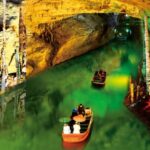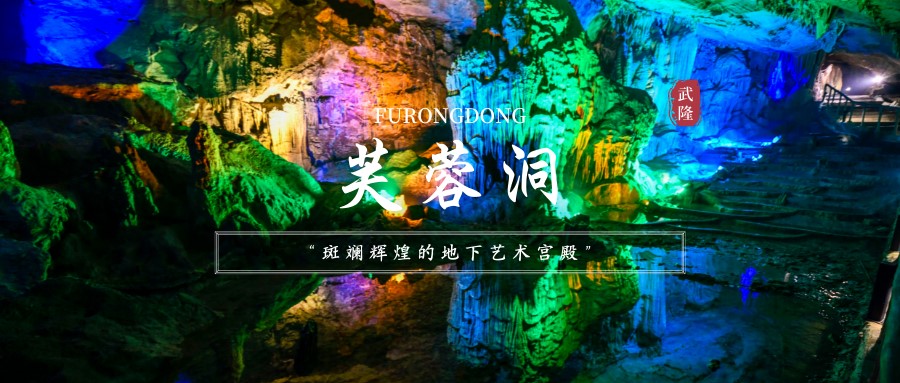
Furong Cave is located 4 kilometers from Jiangkou Town in Wulong County, on the banks of the Furong River. It was discovered in May 1993.
After two on-site surveys by relevant cave research institutions from China and Australia, it was evaluated as “a world wonder, a first-class cave attraction” and “an underground palace of art and a museum of cave science.”
The main cave of Furong Cave is 2,700 meters long, with a total area of 37,000 square meters. The most spectacular part is the “Splendid Hall,” covering an area of 11,000 square meters.
The cave contains almost all types of stalactites found worldwide, featuring over 30 different sedimentary characteristics.
Unique Structure
Furong Cave is divided into three major scenic areas. The first area is characterized by vibrant, high-key colors, while the second and third areas focus on scientific aspects and natural color restoration.
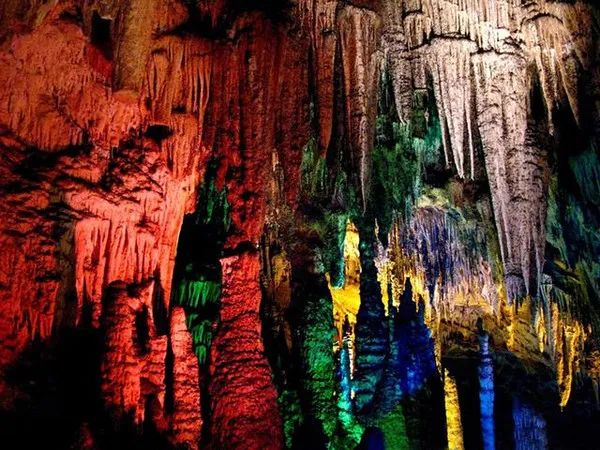
The world-unique “Five Wonders of Dogtooth Spar Crystals” are rare treasures among global cave attractions.
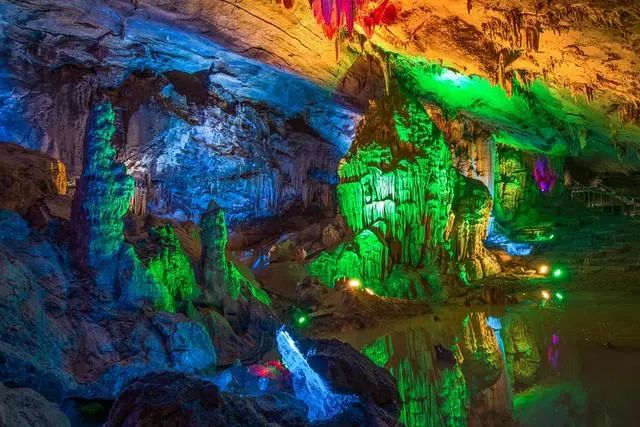
Furong Cave is a large limestone cave, stretching 2,400 meters in length. The cave body is spacious, with widths and heights typically ranging from 30 to 50 meters. The Splendid Hall alone covers an area of over 11,000 square meters.
Inside the cave, various secondary chemical sedimentary formations are abundant and diverse. Most of these formations are widely distributed, pure in texture, and perfect in shape, which is rarely seen in domestic discoveries.

Particularly noteworthy are the ongoing formations of coral-like and dogtooth-like calcite crystals in pools, as well as various curling stones, calcite, and gypsum crystals on the cave walls. These are rare in China and seldom seen worldwide.
The cave scenery formed by various sediments is both delicate and magnificent. Individual formations are exquisite, while the overall landscape is colorful and splendid.
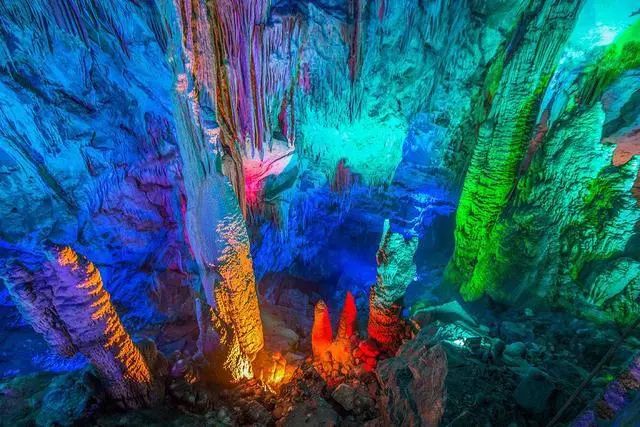
According to the current development plan, three major scenic areas have been opened, with a total tour route of 1,846 meters. There are about thirty main attractions, among which more than ten can be considered the best both domestically and internationally.
The development of Furong Cave for tourism was planned and designed by the Cave Research Society of the Geological Society of China, based on scientific investigation and demonstration, adhering to high standards and requirements.
Therefore, touring Furong Cave not only provides a wonderful spiritual experience of nature’s art and wonder but also imparts valuable knowledge about cave science.
Appreciation Value
Stalactite Types
Wulong Furong Cave is a large limestone cavern, stretching 2,700 meters in length. The cave’s scenery is both magnificent and delicate. Over 20 types of stalactites have been discovered, representing the majority of known types worldwide. Some of these types are extremely rare globally. According to Tan Kai’ou, a senior engineer of the China Cave Research Society: “This cave is world-class. We call it world-class because it contains dozens of sedimentary landscapes. It has a wide variety of sediment types, a grand cave body, and spacious caverns with heights of 40 to 50 meters. The attractions inside are world-class. With Furong Cave, you can find almost all types of cave sediments known in the world.”
Upon entering Furong Cave, visitors are greeted by layers of stone flowers and rows of stone pillars. These formations are created entirely by water dripping from the rock walls over long periods. The stone draperies and pillars of various sizes and shapes resemble exquisite works of art, captivating the eye. With a bit of imagination, they can evoke vivid cultural imagery.
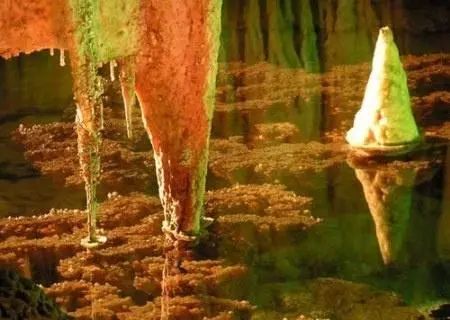
Plant Types
The only plants growing in Furong Cave are ferns and mosses. Eleven species have been discovered in the Dragon Palace. It is said that the spores of these plants originated billions of years ago, contemporary with dinosaurs, and have endured a long history in darkness. The “Silver Thread and Jade Filament” scenery refers to the delicate, root-like stone crystal flowers and curling stones on the cave walls. The stone crystal flowers in Furong Cave are pure white and delicate in form. Their abundance and wide distribution are unparalleled among all caves in China.
The Coral Jade Pool is composed of pale yellow calcite crystal flowers and stalagmites, covering an area of 30 square meters. The stone crystal flowers in the pool appear to float on the water surface, but they actually exist in two layers, above and below the water. In terms of pool area, depth, and the quantity and scale of stone crystal flowers, the Coral Pool is considered the best in the world and is a treasure of Furong Cave.
Furong Cave holds immense value for both appreciation and scientific research. Visitors can gain spiritual fulfillment from the wonders of nature and acquire extensive knowledge about caves during their tour.
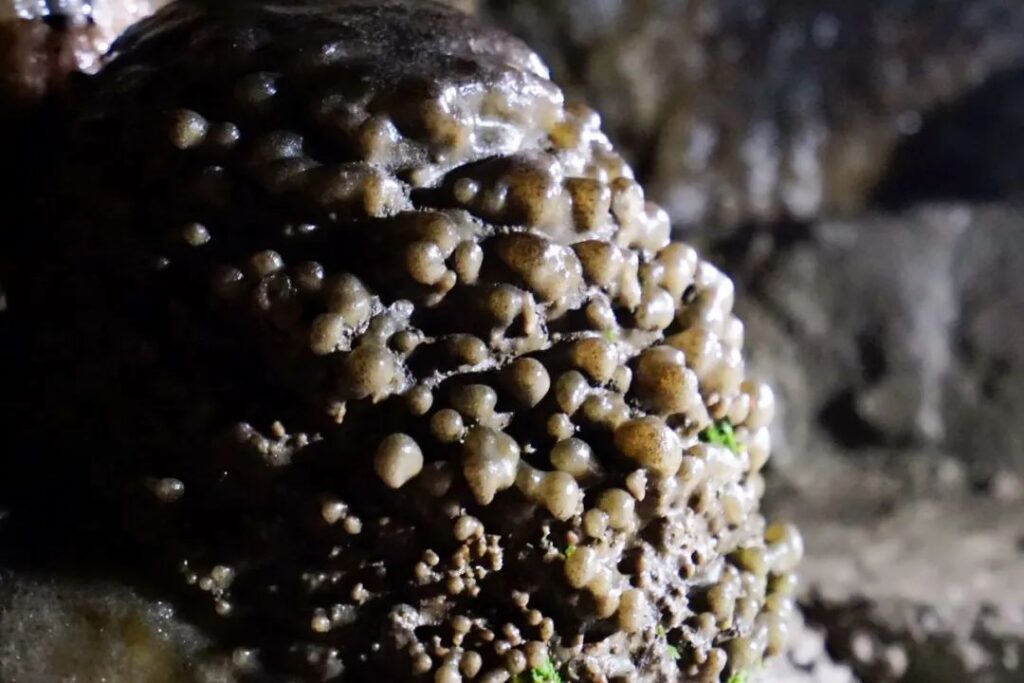
Research Value
Furong Cave is China’s only “cave” nomination for “World Natural Heritage.” Its massive cave body and rich cave sediments have not only impressed international cave experts but also captivated numerous tourists.
The cave boasts over 70 types of secondary chemical sediments, creating a rich landscape that is both magnificent and delicate, leaving visitors in awe.
Professor Zhu Xuewen, President of the China Cave Research Association, commented: “Furong Cave is a colorful and magnificent underground palace of art.”
Australian Cave Association experts praised “Furong Cave’s beautiful palm-shaped stalagmites, red coral pools, and gypsum flowers as world-class attractions.”
Andy, President of the International Union of Speleology, called it “one of the world’s best tourist caves.”

In 1994, Furong Cave was ranked first among over 100 karst caves in China, earning the title “King of Caves” and recognized as the most beautiful underground landscape.
It not only has high tourism and aesthetic value but also holds significant research value in fields such as stratigraphy, mineralogy, geomorphology, hydrology, geochemistry, biology, Quaternary geology, paleoclimatology, paleoenvironment, and archaeology.
After over a decade of exploration and scientific investigation by scientists from more than 20 countries including the UK, USA, Austria, Canada, and China, Furong Cave has been confirmed as not only a large-scale cave with high tourism and scientific research value but also the center of a vast cave system known as the Furong Cave Group. This system consists of numerous vertical shafts and horizontal caves, placing it alongside the Mammoth Cave in the USA and the Krubera Cave in France as one of the world’s three great cave systems.
In 1996, Furong Cave began the application process for World Natural Heritage status.
In 2004, it was included in the list of nominated sites for World Heritage.
Transportation Routes
Public Transportation:
Buses to Furong Cave are available from Chongqing Nanping Bus Station. At Wulong County Bus Station, buses to Furong Cave run daily from 7:00 to 17:00, with a fare of 9 yuan and a journey time of about 40 minutes.
Self-driving Route:
From Chongqing, take the Yu-Fu Expressway, then proceed through Fuling to Yajiang via the Ya-Da Road. Follow the second-class highway along the Wu River. It takes about 3 hours by car to reach Wulong County. There is a 3-kilometer road connecting Furong Cave to National Highway 319, leading directly to the tourist entrance and passing by the exit.
Long-distance Bus:
Take a long-distance bus from Chaotianmen Bus Station to Wulong (65 yuan, 3-hour journey). Then, take a bus from Wulong to Jiangkou Town and transfer there; alternatively, you can rent a car in Wulong to reach the cave.

